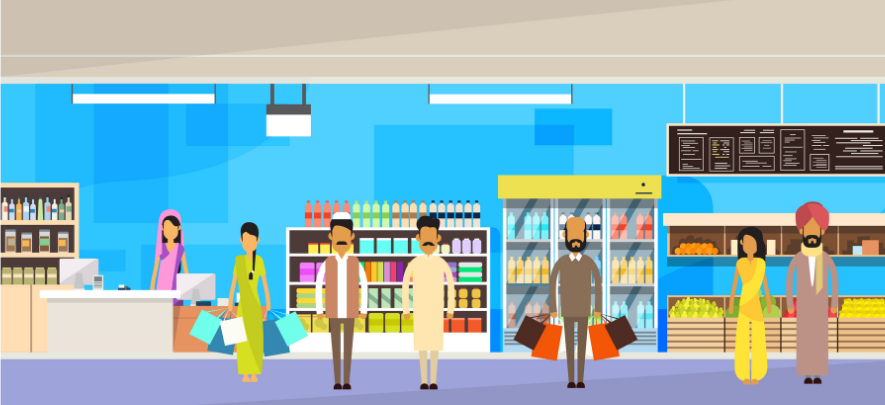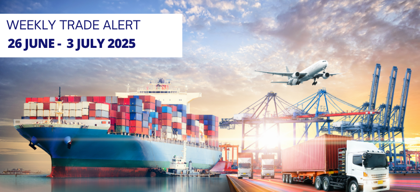Have confidence in India's consumption potential

Retail
202 week ago — 12 min read
In the last one and a half years all things around us have undergone unprecedented change, This is particularly true for retail. For retail, it brought an avalanche of challenges as well as opportunities. Bijou Kurien, Chairman of RAI and Strategy Board Member, L Catterton Asia shares his views on the current situation of retail in the country, the imperatives and challenges for retail and what the next couple of quarters will bring. Excerpts from an interview…
Which things in retail have changed irrevocably due to the pandemic?
One needs to look at the change from the perspectives of three stakeholders in the industry—the retailer, the consumer and those involved in the conduct of retail such as the government, the suppliers and the landlords.
The digitising of retail whether it’s to connect with customers or accept digital payments or making inventory visible to the customer, all of that was in overdrive. Companies stepped up their act, connected virtually with the customers and ensured that they kept the supply chain going.
Needs of consumers continued irrespective of whether there was a lockdown and they tried to find ways and means to fulfil those needs. And retailers adapted themselves to the requirements of the situation to help meet the needs. When there was a lockdown and stores were closed, retailers figured out ways to deliver to customer’s doorstep even though they were not originally e-commerce players.
They figured out ways to use WhatsApp for customers. You see vegetable vendors spreading their gunny bag on the roads and in the middle of all the vegetables is a QR code. A pushcart vendor also has a QR code. The digitising of retail whether it’s to connect with customers or accept digital payments or making inventory visible to the customer, all of that was in an overdrive. All retailers large and small, traditional or modern transformed themselves to be able to adapt to the situation.
At the same time, the government tried to figure out a way to balance between stopping the spread of the pandemic and fulfilling the needs of the people. In many cases they encouraged NGOs to get in the act and distribute food parcels to those who required it.
Companies stepped up their act, connected virtually with the customers and ensured that they kept the supply chain going, making deliveries in spite of the challenges. Mall developers and landlords too came into the act. All of them were willing to work together to adapt to the situation and keep commerce running to ensure that the needs of the customer were met, whatever be the ground situation.
That was the first time we saw all these players getting together and working together for the consumer.
What difference do you see in wave one and wave two and how should retailers look at this situation?
The retail industry should have confidence in the consumption potential that exists within the Indian market. There will be hiccups, which would have risen due the temporary disruption in the ability to buy due to pay cuts or job losses or the ability to sell due to restrictions. Leaving those hiccups we saw steady improvement since the Q3 of the last financial year until mid-March. What we must believe in the opportunity that the unspent potential consumers offer us. And find a safe way to tap into that potential.
Unlike last time when there was a complete lockdown, wave 2 saw partial well-controlled lockdowns. It was good as it allowed economic activity to continue in some form or the other whether it is manufacturing, distribution and supply chain. Last year, sometimes it was difficult to find products on the shelves. This year we are not experiencing such shortages.
There is a difference in the way everybody—manufacturers, retailers, consumers and the government.— has been prepared for wave 2.
Another aspect to consider is that the stock market reached a high. This indicates the long term potential of the economy—it’s reflecting what will happen to these companies and this country, two years from now. Last time we were afraid of the disease and death. Now, we know that there are vaccines available and that there is treatment available. The entire healthcare system too is better prepared. All this is increasing the consumers’ confidence in the future.
Moreover, international markets were open and hence exports were continuing. That is also bolstering consumer confidence.
Even though a lot more people have been affected by the second wave, including some of our family and friends, and even though some of us in the MSME and unorganised sector have been more impacted than the others working in large companies and export sector, the confidence we have continues to be strong. That I think is what we as retailers should capitalise on as we open again.
Could you elaborate on this a little bit?
Demand can be driven by consumption or it could be driven by investment. Investment-driven demand has a longer gestation cycle—infrastructure development takes at least six to eight months. Even private sector investment takes six months to a year before it comes to fruition. So while conceptually, economically investment driven demand is a good way to work your way out of a recession, it is much slower work.
This means consumption driven demand is the key.
Demand can be driven by consumption or it could be driven by investment. Investment-driven demand has a longer gestation cycle—infrastructure development takes at least six to eight months. This means consumption driven demand is the key.
When we speak of consumption-driven demand, either the Govt... needs to consume or private consumers need to consume. The chances of the Govt.. consuming, given its own fiscal challenges, is slim. So now it’s about private consumers. Because of smart cost control the top 500 companies in the country have actually managed to deliver better profits in January to March 2021 versus January to March 2020 and also October to December 2020 versus October to December 2019. A lot of these companies are using the profits to retire debts taken to tide over the months of no revenue. They are also using it to pay back the salaries cut.
This has suddenly put a lot more money in the hands of the employees—the middle class. Furthermore, a large part of the country’s consumption still comes from rural India and people in the unorganised sector, the SME sector. In rural areas, agricultural driven productivity, better return on cash crops and improved oil prices will assist in retaining spending power.
Since large companies, export-oriented companies and rural areas which make up for approximately 60-70% of India’s consumers continue to do well, the long-term economic basis is strong. The consumption opportunity will continue to remain strong and, in fact, will grow because in the case of many, savings have actually gone up.
How do you make sure that retailers, landlords, mall developers, governments and companies supplying to retail work together to be able to capitalise on this opportunity? What is the new and interesting thing that we will do in terms of product or experience in the store or the mall that will give them the confidence to step out of their homes once they get vaccinated?
How will the Government facilitate this? Will it provide some kind of a limited period GST holiday, which will reduce the prices of items? Are there new products companies can introduce? Are there new price points or schemes they can experiment with? Is there a way in which mall developers & retailers can work together so that we can draw the customer in? There are lots of opportunities to work together. A large percentage of people have more money because their expenditure on holidays, travel has reduced.
That’s what we should keep on uppermost on our minds. Think of the fact that it’s our opportunity to be able to catalyse this change. That’s the only one piece of advice that I have for everyone.
What should retail industry learn from the crisis?
As an industry, we should prepare to learn new ways of doing what we have been doing in the past. Look for change, and once you see it, embrace it. Don’t be surprised when it hits you, or run away from it or be afraid of it.
Remember, we are not fighting between online and offline, we are fighting for the customer. We should all attempt to provide customers with the best choice, whether online or offline. Offline retailers are talking about digital transformation, online retailers are talking about getting offline and creating closer access to the customer. Each of us has to do what is required to give the customer a better deal.
Think of how to leverage these changes to our business model or innovations to create greater value for customers and to differentiate ourselves. Amplify them if they are for the benefit of the consumer.
We must also remember that customers have needs and wants. We are not in the business to only service the needs. We are also in the business to service wants. Wants have to be created by all of us so that we are able to exploit the potential that exists in the consumer. We need to be able to persuade our customers to upgrade their standards of living. So don’t just fulfil customer needs. To evolve as retailers, we should create wants when customers come in to service their needs.
Think of what we have been doing. Have we changed in any way in the last one year…Whether it is becoming a little more digitally savvy, accepting online payments, delivering to someone’s homes, or video-casting from the store? When we get back to normal, we should not forget the benefit these things have provided and lapse back to what we were earlier.
Think of how to leverage these changes to our business model or innovations to create greater value for customers and to differentiate ourselves. Amplify them if they are for the benefit of the consumer. We should be thinking of the consumers of tomorrow and figuring out how to adapt our business model to them. We have to be far more foresighted in the way we run our businesses.
I’m very positive about the outlook for retail. The impact of wave 2 has been much lower than the impact of wave 1 and our ability to be able to get back to normalcy at the end of wave 2 is better than what it was at the end of wave 1. Consumers are getting more confident because of the accelerated vaccinations; it is now our responsibility to make sure that we are able to get them back into our stores.
Also read: Reflections of a retail leader
Image source: shutterstock.com
Article published in STOrai Magazine. Interview by Hitesh Bhatt, Editorial Director – STOrai. He is also Director of Marketing and Communication at RAI. Adapted from Leadership Dialogues Series Webinar ‘The Great Retail Reset.
Disclaimer: The views and opinions expressed in this article are those of the author and do not necessarily reflect the views, official policy or position of GlobalLinker.
View STOrai 's profile
Other articles written by STOrai Magazine
The Art & Science of People Pleasing in Retail
26 week ago
Most read this week













Comments
Share this content
Please login or Register to join the discussion